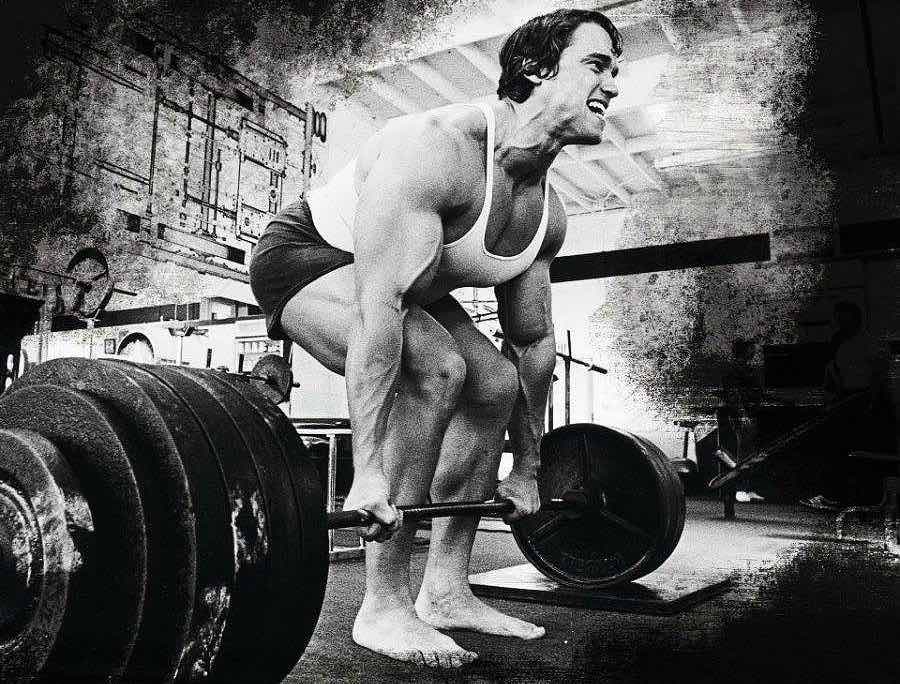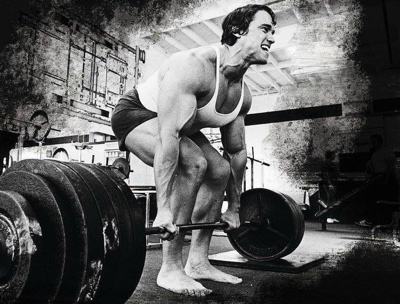
Arnold Schwarzenegger Lifted Barefoot
How To Lift Weights Barefoot
Table of Contents
Lifting weights barefoot is how I believe nature intended for us to work out. Here we will walk through all the things you will need to do in order to lift weights barefoot.
How to life weights barefoot: Its all in the preparation. Make sure you warm-up, stretch and understand the mechanics of the movement properly you are about to execute properly. let’s look into it in a bit more detail.
So you can enjoy the barefoot weightlifting experience.
Lifting barefoot could take several forms, let run through them quickly.
Barefoot Forms
Barefoot No Shoes or socks: This is the very basics form of barefoot lifting today. Made famous notably by Arnold Schwarzenegger who clearly favoured the no shoe approach to weightlifting
Barefoot with Socks: Just plain old sock or toe socks if the mood catches you and you are a bit dubious about the surface you will be lifting from. Just make sure that they are not too tight and don’t restrict the toe spread of your feet.
Barefoot with Shoes: This is my personal favourite, barefoot or minimalist weightlifting shoe option. This could range from a minimalist/barefoot shoe like the Vibram five fingers or zero drop shoes like the Veevos.
Now that we have cleared that up we can continue with the warm-up details. You will most likely be in one of these categories
Prep
Equipment needed
- Lacrosse Ball
- Foam Roller
- Roller Stick
- Light Band
- PVC Pipe
Check out the ones I use on the recommended gear page.
Warm-up
As a general rule, all warm-ups should be sport or movement specific.for the purposes of this article its to lift weights so we will stick with that assumption. The idea is to prepare for the task ahead. This can take anything from 10-30 min.
The main objective of the warm-up is to increase the bodies core and muscle temperature so we can elicit a wide range of responses which have been proven to improve performance. A 1°C increase in muscle temperature from rest is equivalent to approximately a 4% increase in power output. The ideal temperature being approximately 37.5°C. Any more than this will likely have negative effects.
Stretches
Simple Light stretching movements are necessary. It is best done before and after exercising. this will help to Reduce post-workout soreness or DOMS (Delayed Onset Muscle Soreness)
Firstly let us look and the specific areas as I said earlier.
These include:
Hip Complex
They are your torsos connection and key point. Stretch them properly to mobilize not just your hips, but the flexors and thighs. Your hip flexors are made up of the Psoas Major and the Iliacus. These muscles allow for flexion of the leg at the hip joint. Tightness leads directly to lower back pain since the psoas is connected to the lumbar 1-5 vertebrae.
Iliacus stretch
The Butterfly stretch
The kneeling lunge
Squatting internal rotations
Frog Stretch
Piriformis Stretch
Hip-flexor Stretch
Couch Stretch
Hamstrings
The Hamstrings are an integral part of the posterior chain. Deadlifts, Cleans, snatches, are the heavy compound lifts you recruit them for.
Seated Hamstring Stretch
Standing Hamstring Stretch
Advanced Hamstring Stretch
Banded Hamstring Stretch
Hurdler Hamstring Stretch
Ankles
Ankle Circles
Banded Ankle Stretch
Achilles Stretch
Standing Calf Stretch
Tip: over time you will amass what I like to call a toolkit of warmup sequences and stretches that work perfectly for you. So as you go through all the suggestions we have made remember to build your own personal toolkit that works best for you.
Lacrosse ball and Foam-roll
Gluteal Complex
Gluteus Maximus, Medius, and Minimus
Glute Figure 4
Piriformis Figure 4
Tensor Fascia Latae (TFL)
IT Band
Hip Flexors
Iliacus
Psoas Major
Psoas Major 2
SI Joint
Safety checks
- Make sure the facility and location you are using will allow you to work barefoot
- Ensure that the general surface has no sharp objects
- Check that there are no slippery surfaces
Benefits of lifting barefoot
1. Improved Proprioception
The main benefit of barefoot training is proprioception, training barefoot improves this which will improve our balance and movement. Proprioception is our unconscious perception of space and our orientation and movement within the space around us.
Lifting barefoot helps us to feel connected to our environment and helps improve our balance and natural movements. When you are doing lifts that involve your legs, it’s important that you grip the ground with your toes. I often coach my athletes to screw their feet into the ground to create more torque, lifting barefoot enables you to do that more successfully.
2. Stronger Arches
Wearing shoes will artificially raise your arches and directly remove the responsibility from the arch muscles to do their job. Wearing shoes can create a vicious circle with arch support. First, our arch muscles become weak from not being used, as they are supported by shoes. So you get weak arches and you need more support to relieve the tension temporarily. But now if you go for a flatter or less supported shoe the symptoms will return. So you end up needing more and more support but the root of the problem does not get addressed. This leads to a life of shoes and orthopaedic problems. Let your natural arch muscles develop naturally to avoid these problems.
3. Greater Power Delivery
When doing the deadlift, squat clean or kettlebell swing, the act of lifting the weight from the ground employs quite a few muscle groups from your legs, back, and core to get the weight off the ground. During this movement, we rely on the feet to make this happen. As we pull and muscle the load upward, our feet are the anchor point to the ground, they are our direct connection to the ground.
When we wear wedged and cushioned shoes while lifting, a lot of the force is lost as it is absorbed by the cushioning. Lifting barefoot removes this wasted energy loop and translate the power we generate into the lift better.
4. Improved Muscle Alignment
Lifting barefoot improves muscle alignment. From the feet to the ankles, to the knees, hips and lower back. These muscle segments are optimised more when we are barefoot than when we are shod. The repetition of these movement patterns creates new neural pathways that are beneficial to strength and help to avoid injuries.
5. Heavier Lifts
Compound lifts like the back squat or deadlift are often done barefoot by Crossfitters, weightlifters powerlifter. This is due to the improved feel you get from barefoot lifting. this improves glute and hip recruitment in executing the lift.
6. Stronger Foundation
There are much better balance and stability achieved when weightlifting barefoot. As the feet are the foundation of the lift, strength improvements in the feets muscular and connective tissue create a stronger base. Lifting barefoot also strengthens the stabilizing muscles of the foot and ankle. The robust stability and support from shoes can make the foot and ankle lazy.
7. Healthier Feet
Shoes are widely known to be the cause of most foot problems. Shoes without a doubt lead to bunions, corns, athlete’s foot, hammer toes, ingrown toenails and fallen arches to name just a few of the foot related ailments we endure in the modern age. People who spend lots of time barefoot do not experience any of these and generally do not even get any callouses.
8. increased Foot flexibility and mobility
Going barefoot increases flexibility and mobility of the foot and gives a much wider range of motion. also stronger ankles and more support. Approximately 30% of the joints in our body are in our feet. Our feet are the base of support for our whole body. Often knee and back pain begins with poor foot mechanics. Lifting barefoot helps to eliminate that
9. Stronger Body
Our feet are often the only part of us that touches the ground on a regular basis. Lifting Barefoot is a touch point to release all of the energy and force that we accumulate throughout our body. Barefoot Lifting helps energy to flow smoothly through our body. As the stability and mobility of the feet deteriorate, this affects and changes the ankle, knee and hip positions and makes them all more prone to injuries. Many athletes who train barefoot have tremendous results and experience fewer injuries.
Other Weight Lifting Movements
All of these movements are with a Barbell
The Clean
Also called the Squat Clean this is a composite lift consisting of a clean transitioning into a front squat and then a stand. Cleans are commonly executed as part of a compound lift after the clean making the lift more dynamic. for example, the clean and jerk.
The Squat
Often Called the King of Exercises. no other exercise works the entire body from head to toe. The squat has over 40 variations of the same basic movement and principles, with each variation slightly modified to tweak ever so slightly the angles, levers, and muscle groups targeted in the movement.
All forms of squatting provide immense strength benefits to the thighs, hips and buttocks, and to a lesser extent the hip flexors and abdominals.
The Deadlift
One of the fundamental movements that are a must for any weightlifter. The deadlift is excellent in developing sheer strength and improving quality and foundational skill for performing other movements. It is an excellent compound exercise, building strength in muscle groups like the lower back, forearms, quads, hamstrings, traps, and glutes.
The Snatch
The objective of the snatch is to lift the barbell from the ground to overhead in one continuous motion. There are four main styles of snatch used: squat snatch (or full snatch), split snatch, power snatch, and muscle snatch. The squat snatch and split snatch are the most common styles used in competition while power snatch and muscle snatch are mostly used for training purposes.
All in all the idea is to make sure that you take it step by step. Choose the weightlifting movement that meets your needs. Warm up and have fun.
